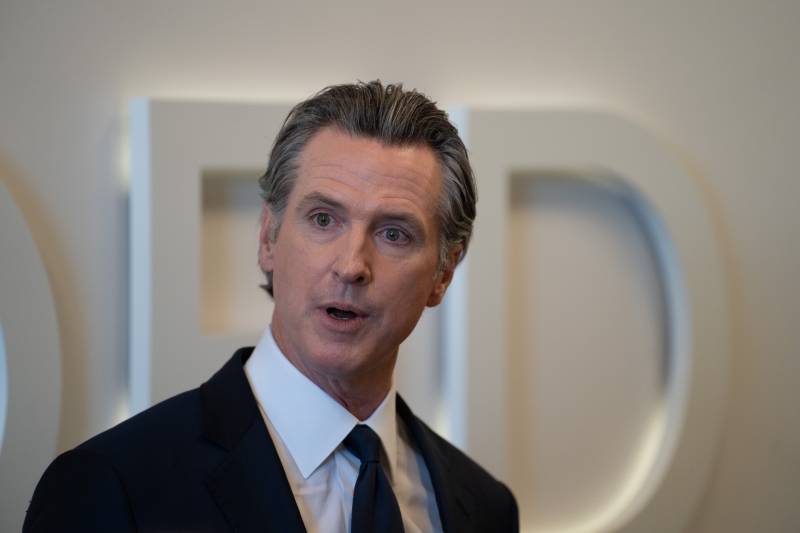“This budget is resilient, because we have provided a framework over, l would argue, the last nine or 10 years, for this investment in historic reserves,” he said, noting that his administration also began holding the line on spending last year, when it became clear that the state would be facing a fiscal downturn.
“We are in this position today because we were not profligate when it comes to ongoing spending,” Newsom added.
Newsom’s administration has framed this new term as an opportunity to execute on many of the ambitious plans the governor rolled out during his first four years. On Tuesday, he highlighted several of those, including his commitment to battling homelessness.
He noted that since he took office, the state has increased homelessness spending dramatically.
This year, Newsom is proposing $3.4 billion in homeless spending from the state’s general fund.
“There are no cuts,” he said. “We continue to make big investments — historic, unprecedented investments.”
Included in those investments are $400 million in new money to help cities and counties clean up homeless encampments, and an additional $1 billion for local grants to counties. He warned, though, that with the additional money comes state oversight to ensure local governments are actually tackling the problem.
“People have just had it. They are done, fed up,” Newsom said of homeless encampments across the state. “We want to see these encampments cleaned up.”
Newsom also said that while K–12 education spending will decrease modestly — by about $1.5 billion, to $108 billion — per-pupil spending will remain at near record highs, for a total of $23,000 per pupil.
The governor noted that the per pupil amount has more than doubled over the past decade and pledged to continue to invest in education. Still, the decline is sure to worry school districts already dealing with declining enrollment and the ongoing impacts of the COVID-19 pandemic on learning.
Other areas the governor highlighted include billions of dollars in investments aimed at stemming some of the effects of climate change, including $2.7 billion for wildfire and forest resilience and $8.6 billion to tackle water and drought issues, including safe drinking water, flood protection and habitat and watershed investments.
The governor is also proposing $97 million in new investments to fight the opioid and fentanyl crisis, which claimed more than 6,800 lives in the state in 2021, including hundreds of teenagers. Newsom wants to spend $79 million to distribute drugs to treat people who are overdosing, and another $3.5 million specifically to make overdose medication available to middle and high schools throughout the state.
“This is a top priority,” he said. “There’s not a parent out there that doesn’t understand the seriousness of this fentanyl crisis.”

